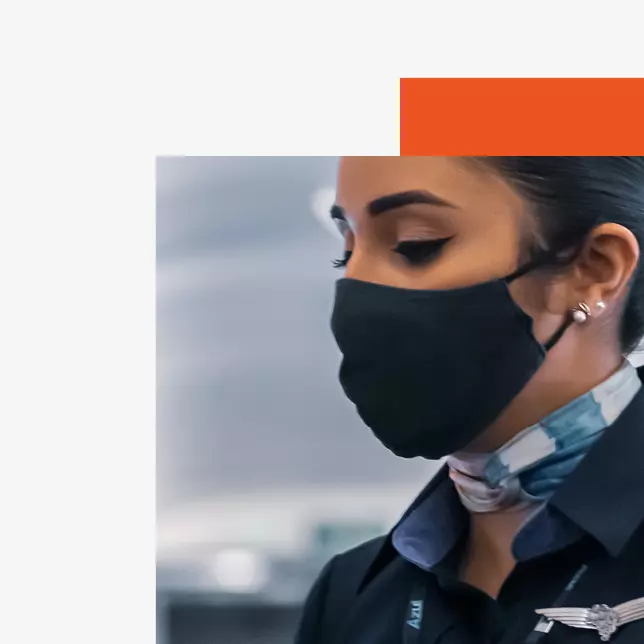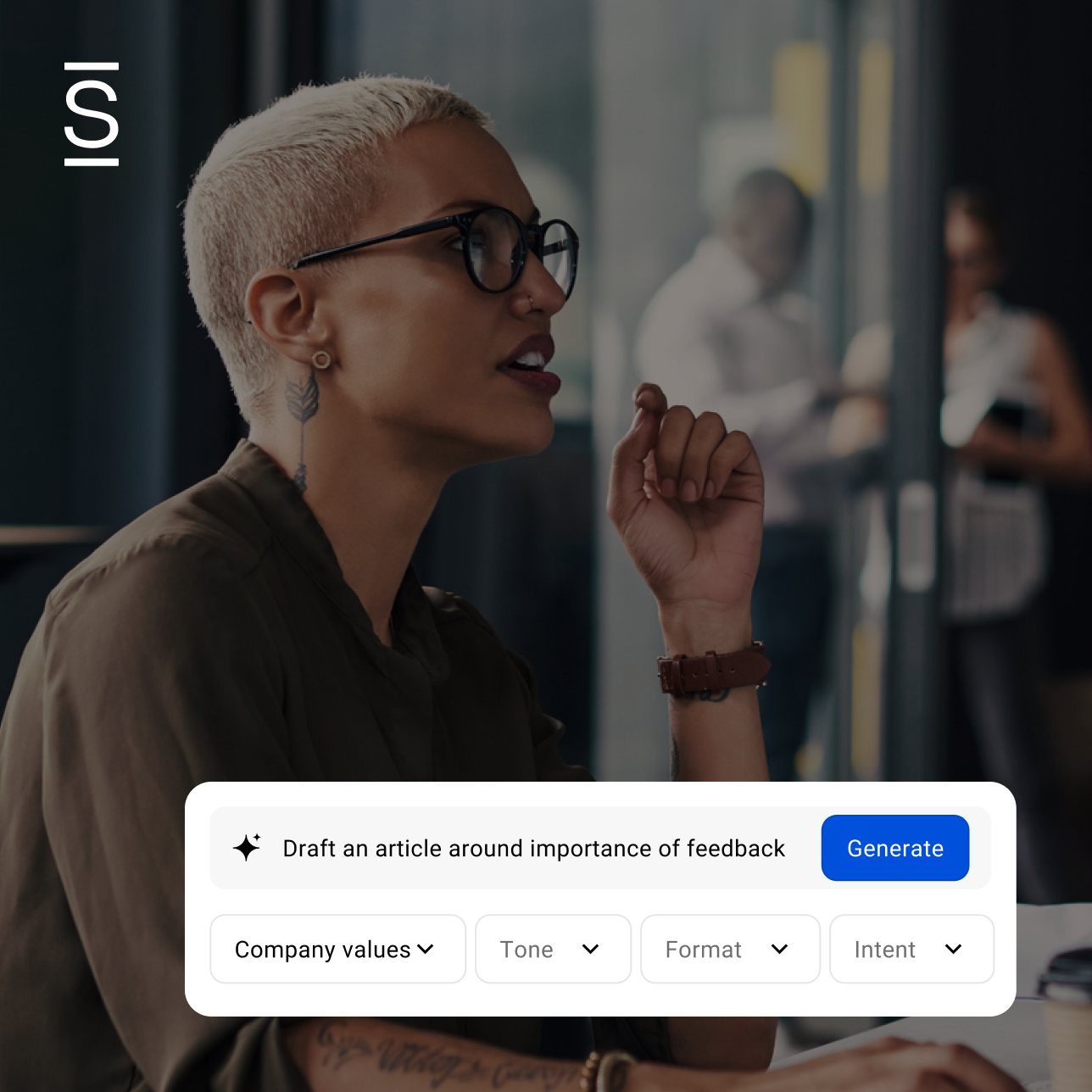Confession: I’m a white-knuckle flyer. Even though I travel a lot, every clang, rattle, and clink on an airplane can send me into a tailspin (pun intended). To stay as calm and collected as possible, I look for reassurance. And I always find it—in the flight attendants.
Whenever I fly, I watch flight attendants’ every move. I watch their expressions. I am keenly aware that their roles aren’t just to serve the customer but to keep the customers safe and prepared for all situations. Through verbal and non—verbal communication, they’re sending messages that say, “it’s going to be okay” and “we’ve got this.” When flight attendants make their rounds, they do so much more than just pass out pretzels and water. They’re taking time to check in with passengers, assess the vibe of the plane, and confidently share important messages.
I was on a flight recently. While my eyes were fixed on the flight attendants, a lightbulb went on in my mind. The flight attendants reminded me of my employee experience (EX) and comms friends. The flight attendants’ role on the journey is crucial. Their continual guidance, empathy, and advocacy for the passengers make what may sometimes be a dicey situation seem better. More comfortable. The passengers can relax, knowing they’re in good hands.
Friends, does that seem familiar? It does to me. Like maybe we all serve essentially the same function. We’re on this journey together and use many of the same skills as the flight attendants to get employees safely to their destination.

Could this be why it’s called “onboarding”?
Think for a moment about everything a flight attendant does. They ensure communication between the passengers and the crew. They deliver information for assistance and safety. They listen to passengers and engage to help solve problems. Even if they can’t solve the problem, they offer assurance and empathy—going out of their way to ensure that each passenger feels seen and heard.
Employees are the passengers on your company’s journey. Just like on a plane, they have needs, desires, frustrations, fears, and irritations. And you’re right there with them—listening, advocating, initiating conversations, and crafting communication to address these feelings. And that work you’re doing helps foster a great employee experience—much like flight attendants create excellent customer experiences.
A U.K.-based internal communications leader, Claire Jasper of Quilter, told Gallagher that listening and understanding are paramount to creating positive employee experiences. “We start by listening, and then we seek to understand,” she said. “We’ve learned, through testing and trials, that actually giving back ownership and control to our employees really enhances their employee experience.”
A sense of control: tools of the trade inflight and in the office
Let’s zero in on one word: control. The biggest obstacle to fearless flying is having no control over how the pre-flight or flight goes. You’re going where the airplane is going. You’re going to the bathroom when the crew tells you to. You’re only using your laptop when the sign says you can. You aren’t always free to move about the cabin. And though passengers might not express it that way, the underlying fear is losing control. But who steps up? Flight attendants, of course. Whether they’re offering varying levels of control—something as simple as “Coke or Sprite?” to changing seats, or are communicating the status of the flight, what to expect when you land or what’s happening next. A sense of control can restore calm and diffuse escalating situations.
Employees go through that, too. They can sometimes feel that their fate is tied to the company’s success and that they have little say in corporate decisions, market trends, or what they see happening around them. And again, that’s where we come in.
A joint research project at Harvard University and MIT, The Work and Well-Being Initiative, Give Employees More Control over Their Work, identified effective ways teams can advocate for a better sense of control. They include:
- Giving employees more autonomy and a variety of different tasks.
- Allowing employees to have more say in setting work schedules.
- Providing opportunities for employees to influence decisions.
- Creating multiple chances for employees to get involved.
A little bit of control goes a long way to making people feel good about their surroundings—at work, in the air, and if you think about it—anywhere.
A safe space for employees
Do you pay attention to the flight attendants during the safety demonstration before take-off? If you’ve done a lot of travel by air, probably not. While flight attendants run their safety routine, most passengers are already deep into their inflight movie of choice. And the flight attendants know it. They’re acutely aware that not everyone is watching the safety demo. Regardless of the inattention, they are prepared. They know the training, the information, and the equipment to keep the passengers safe. And they know they are the guide to that information and equipment even when no one’s paying attention during the non-crisis.
EX folks know their work is equally as vital as their airborne counterparts. Communicating effectively and quickly—with straightforward answers and timely emergency responses is crucial to the health of companies. For example, when new hires get onboarded, they’re often overwhelmed with everything they need to complete, read, and understand. Meanwhile, tenured employees won’t remember details from an employee handbook they read years ago. And, that’s okay. Those of us responsible for the experience employees have known all that and more, and others can depend on us when they have a question or problem.
Outdated technology can ruin a perfectly good day
We’ve all felt the twinge of irritation when we get on a flight and discover that there’s no Wi-Fi —or place to charge your device at all. “Great,” we think. “Guess I won’t be finishing that presentation that needs to be done before I land.” We’ve known the disappointment of the inflight entertainment system going down halfway through a movie. While these aren’t life-threatening issues, there’s no question that they’re frustrating. They can affect how we feel about the flight, the airline, and travel in general.
Now, imagine that annoyance happening every day. Little things like slow, outdated computers, habitually malfunctioning printers, poor wi-Fi, and disjointed or poor communication can be enough to drive employees to take that call from a recruiter. A PWC study about tech at work revealed that 90% of leaders say they’re choosing tech with their people in mind, but employees (53%) don’t agree. And this poor experience affects the entire organization, from customer service to employee retention.
The same study also pointed fingers at employees’ tools to manage other work tasks. Half of the employees surveyed said they wanted to handle human resources (HR) tasks, like signing up for benefits, seeing work schedules and time cards online instead of visiting an office, sending email, making a phone call, or dealing with paper.
The web of technology that employees have to use day-to-day to do anything—from reading the latest news to recognizing a colleague to looking at benefits information is exhausting. All the more reason that finding a holistic employee experience platform that engages employees and inspires them to do great work is critical.
Trust is a valuable currency
Adam Grant, author of Think Again, said, “Trust is not something you build. It’s something you earn. You can choose to act trustworthy by demonstrating your integrity, benevolence, and reliability. But it’s up to others to grant you trust—and it’s up to you to keep earning it.” The crux of being comfortable on a flight is trusting the crew. As I mentioned, I watch the flight attendants as much as possible. Their faces and body language become my source of truth.
Announcements from overhead tell me if we’re going to arrive late, what I can expect of the weather, or if we’re heading into some turbulence (at which point I really attempt not to freak out!). They aren’t going to announce something that isn’t true or is clearly a half-truth. In doing so for generations of flights, they’ve earned my trust.
At work, any lack of transparency or accountability on behalf of the company has a cost. Trust is a currency, and employees take it away if companies are anything less than upfront—to either customers or employees.
In a 2020 article, Trust Is The Ultimate Currency, about corporate transparency, Forbes spelled out examples of corporate dishonesty that can destroy employees’ trust and erode a positive employee experience. These range from hiring practices not matching the company values statement to being vague about how the company uses personal information.
Honest and open communication with employees is imperative, especially if the company is in the news. If any change affects employees, they need to hear it from the company first. That means it’s critical to adopt and prioritize an internal-first policy for these sensitive situations.
Employees deserve an experience that includes frank discussions about the company’s performance, open-door policies, the psychological safety to ask questions, and clear, honest, two-way communication about everything that affects an employee’s journey with a company.
The company is only as healthy as its employees
As they move through the cabin, flight attendants provide pillows and blankets for cold passengers, water for the thirsty ones, and help with the lighting for those trying to read.. They’ll slip chocolate bars or ice cream to children (yes, this actually happened to my family recently and my 8-year-old daughter was one happy passenger) and answer questions from nervous flyers like me. But how can flight attendants know if all the passengers under their care have what they need unless they ask them?
Employees also need well-checks. They need to understand that the company cares about them as humans and not simply a replaceable cog in a machine. Ensuring workers’ mental fitness is the message that life coaching company BetterUp sends to the corporate world.
“Just like an individual’s health is a reflection of physical, emotional, and mental fitness, so is the workforce,” BetterUp says. In the last two years, when work life saw sweeping changes brought about by COVID-19, employee experience has developed and expanded with that need. Companies realized the importance of their biggest asset—their people—and worked on personal outreach like never before. People needed to feel looped in and part of a bigger team, even in self-isolation.
This level of outreach has grown to sophisticated heights. EX teams use focus groups, surveys, and sentiment analysis to check the vibe on how workers are doing. They use the data as proof for new initiatives to improve problem areas. Naturally, that goes beyond bringing people pillows and blankets, but knowing the company cares enough about them to act on their opinions and needs can often be just as comforting.
When we join a company, our paths merge. Where that journey may go is not always within our control. But, as I discovered mid-flight, watching flight attendants for comfort and taking charge of what we can control makes all the difference.

















